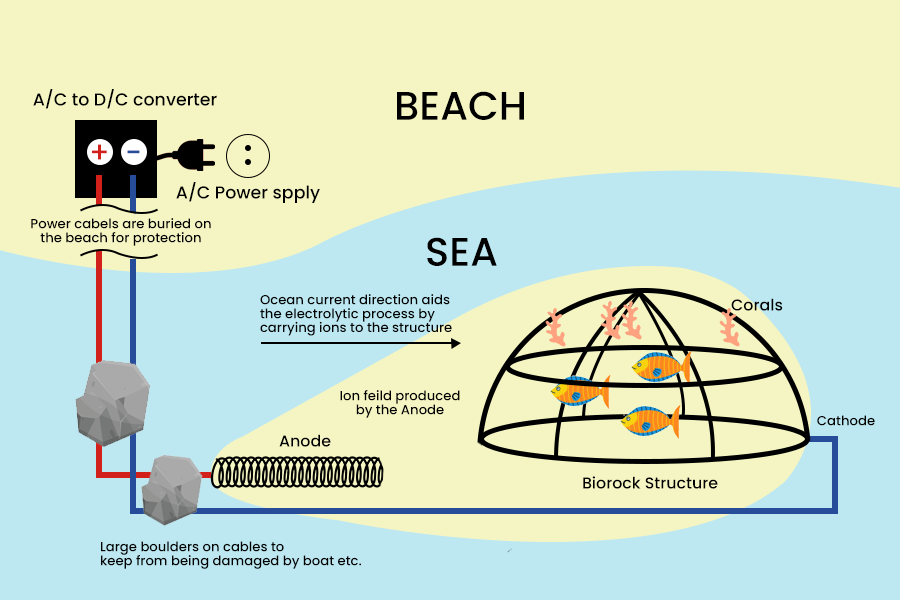- Courses
- GS Full Course 1 Year
- GS Full Course 2 Year
- GS Full Course 3 Year
- GS Full Course Till Selection
- MEP (Mains Enrichment Programme) Data, Facts
- Essay Target – 150+ Marks
- Online Program
- GS Recorded Course
- NCERT- First Ladder
- Polity
- Geography
- Economy
- Ancient, Medieval and Art & Culture AMAC
- Modern India, Post Independence & World History
- Environment
- Governance
- Science & Technology
- International Relations and Internal Security
- Disaster Management
- Ethics
- Current Affairs
- Indian Society and Social Issue
- CSAT
- 5 LAYERED ARJUNA Mentorship
- Public Administration Optional
- ABOUT US
- OUR TOPPERS
- TEST SERIES
- FREE STUDY MATERIAL
- VIDEOS
- CONTACT US
India's Second Artificial Reef Installation
India's Second Artificial Reef Installation
26-05-2024

In a first in Maharashtra, Mumbai is set to witness the installation of 210 artificial reefs in the Arabian Sea, near Worli Koliwada. This is the second artificial reef deployment in the country , the first was in Pondicherry.
- Location: Near Worli Koliwada, Mumbai
- Purpose: To boost marine life
- Materials:
- 210 reef units made from recycled concrete and steel
- Deployment:
- 500 meters offshore
- Timeline:
- 3 months to show initial signs of a thriving ecosystem
Artificial Reefs: Benefits and Significance
- Structures built by humans in freshwater or saltwater environments
- Uses biorock technology to attract and accumulate dissolved minerals, such as calcium and carbonate ions, forming a calcium carbonate layer similar to natural coral reefs.
- Provide crucial hard surfaces for the attachment of algae, barnacles, corals, and oysters.
- Create habitats for fish, absorb carbon dioxide, and benefit local fishing communities.

What is Biorock technology?
- Biorock technology, also known as mineral accretion technology, is a method used to restore coral reefs and create artificial reefs.
- It works by passing a safe, low-voltage electrical current through seawater.
- This process causes dissolved minerals, primarily calcium carbonate, to crystallise on a structure (usually made of steel).
- These crystals gradually build up, forming a limestone layer similar to the natural material found in coral reefs.
How does it work?
- Electrodes: An anode (positive electrode) and a cathode (negative electrode) are placed in the seawater.
- Electrical Current: A low-voltage electrical current is passed between the electrodes.
- Mineral Crystallisation: In the current environment, dissolved minerals such as calcium carbonate are compelled to precipitate from the water and accumulate on the cathode, subsequently forming a layer of limestone.
- Coral Growth: Coral larvae attach to the limestone and grow at an accelerated rate due to the increased mineral availability and the electric field's effects.
- Reef Formation: Over time, the coral growth and mineral accretion create a strong, natural-looking reef structure.
Benefits of Biorock Technology?
- Accelerated Coral Growth: Corals grow much faster on biorock structures than on natural reefs.
- Increased Resilience: Biorock structures are more resistant to environmental stressors like warming waters and ocean acidification.
- Enhanced Biodiversity: Biorock reefs attract a wide variety of marine life, contributing to ecosystem restoration.
- Coastal Protection: Biorock structures can help protect coastlines from erosion.
Additional Information:
- Biorock projects can be powered by renewable energy sources like solar or wind power.
- Biorock technology has been successfully used in various parts of the world for reef restoration and coastal protection.
Must Check: UPSC Coaching Institute In Delhi
India’s EV Mission: Progress Delayed, Not Denied
India’s EV Mission: Progress Delayed, Not Denied


